Abstract
The effects of an alternative course of action on sustained escalation and persistence in the face of failure was investigated using a computerized stock investment task. Subjects invested in “stock” in two “markets” that yielded returns according to two-component multiple variable-interval schedules. Both markets yielded equal but intermittent return rates during the first phase. In the second phase, one market ceased to yield returns, while the return rate for the other market was unchanged. During the second phase, behavioral contrast effects were evident. Investing in the market that ceased to yield returns dropped precipitously, and investing in the unchanged market increased significantly. Although the behavior may be economically “irrational,” it is predictable from the matching law and shows that interactions among a history of intermittent returns in a course of action, current return rate, and currently available alternative courses of action are important determinants of persisting in, or withdrawing from, a failing course of action.
Keywords: behavioral contrast, financial decision making, multiple schedule, financial investment, matching theory
Full text
PDF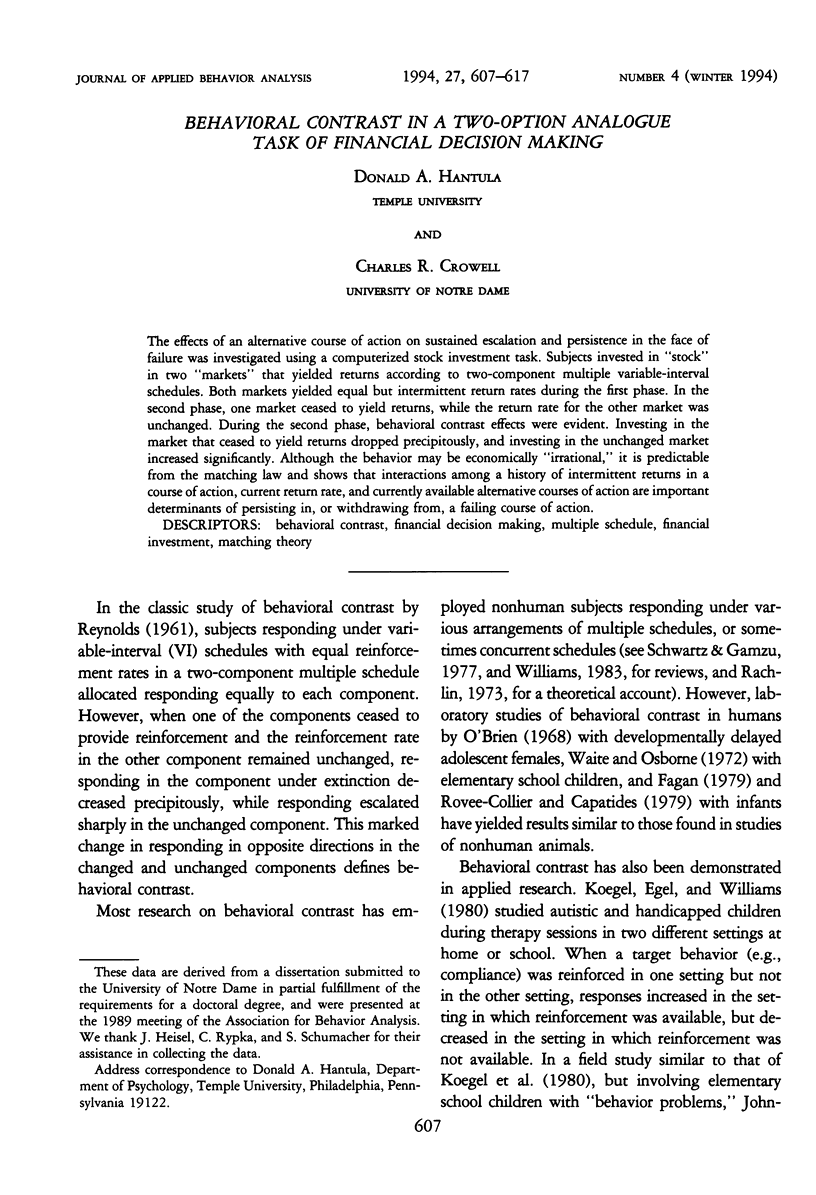
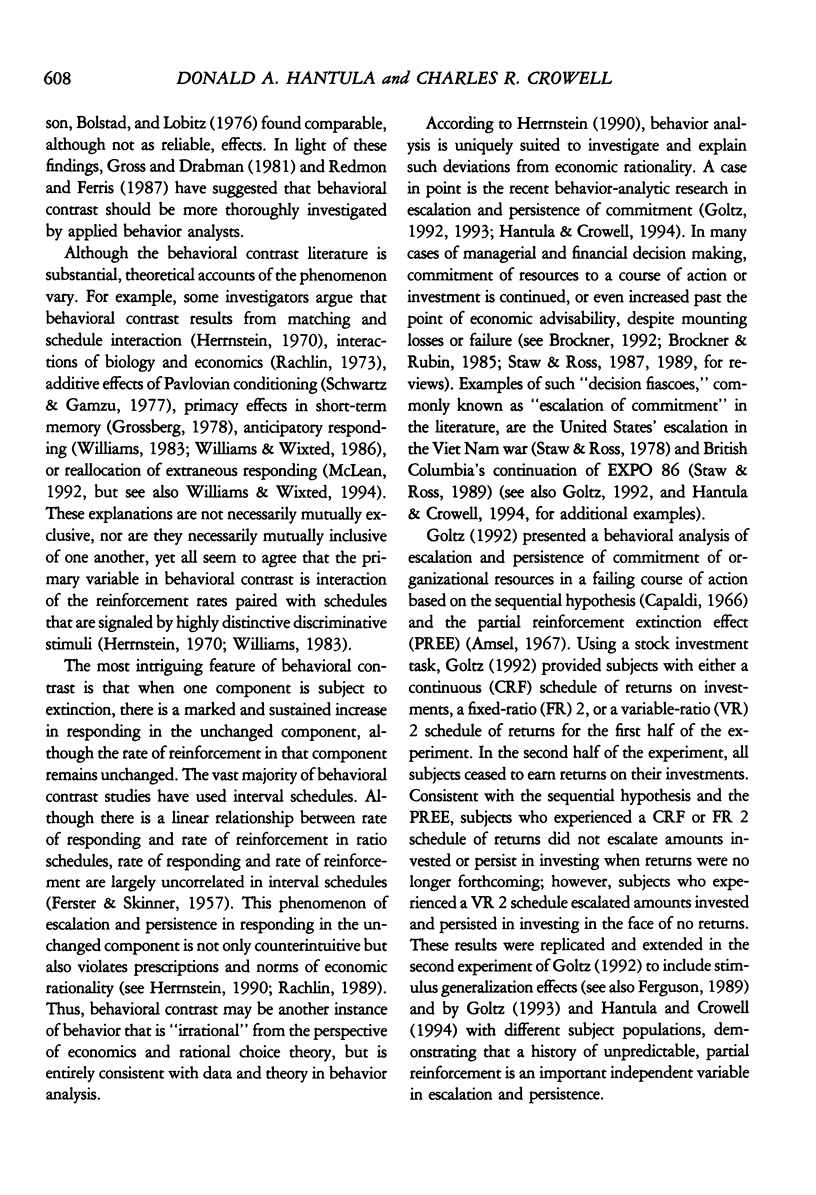
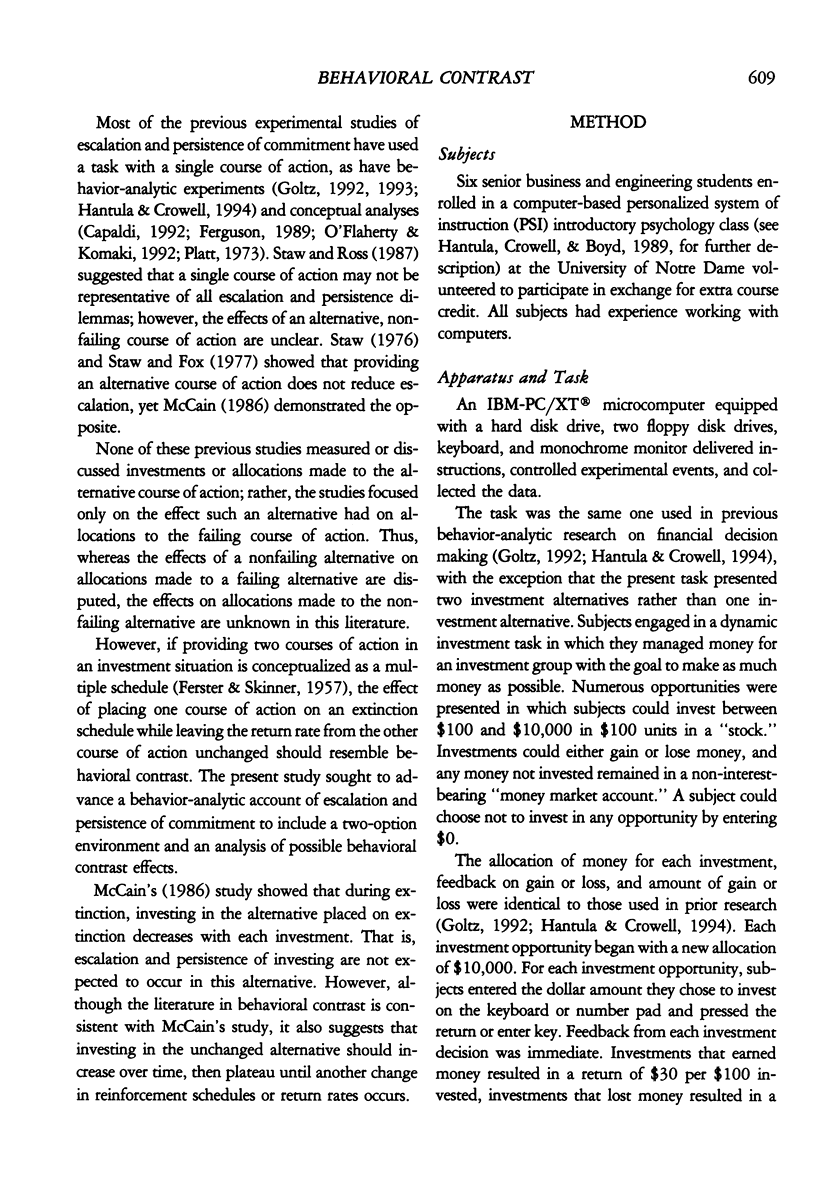
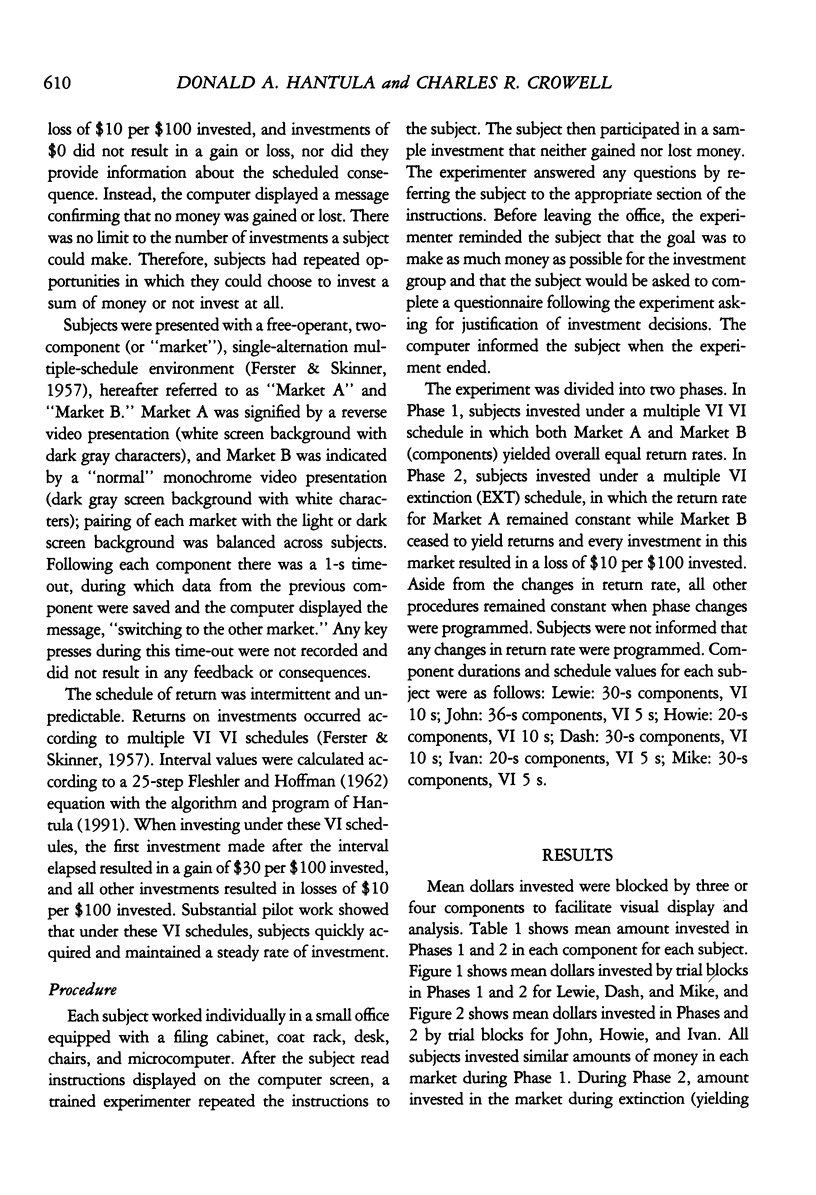
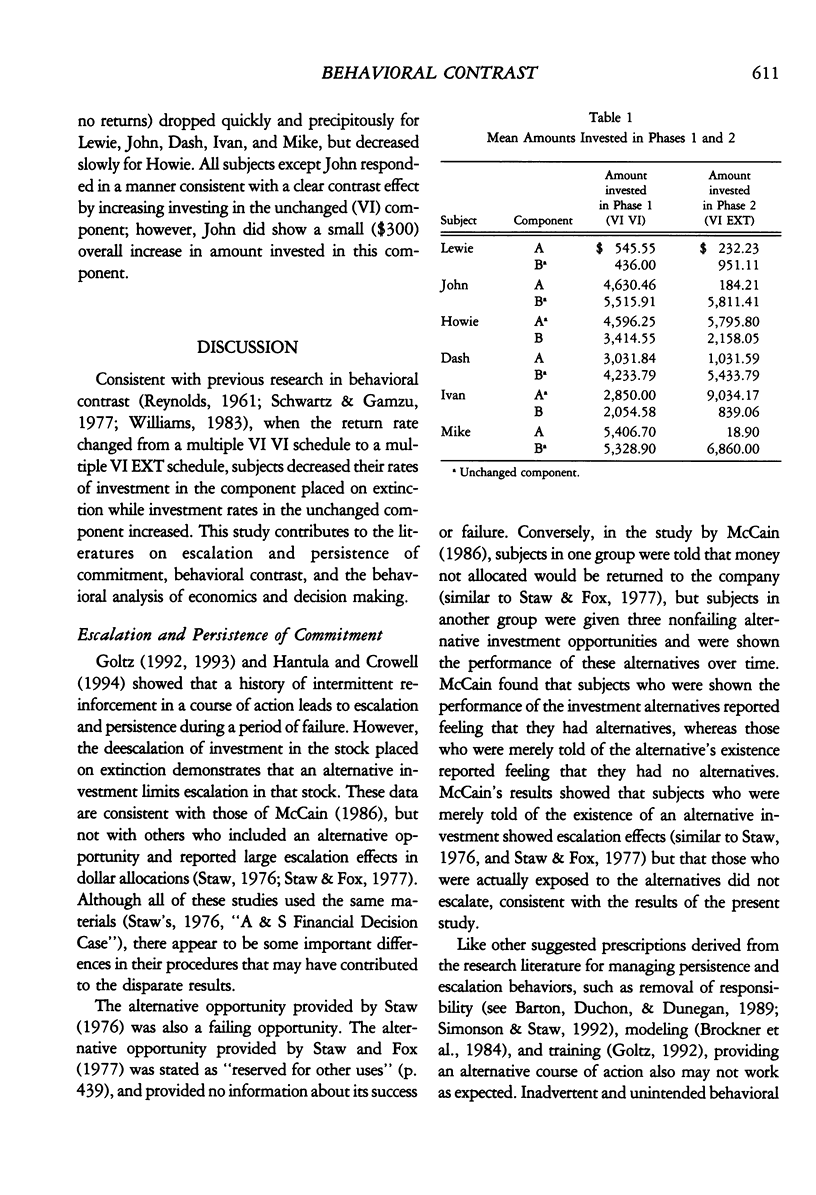
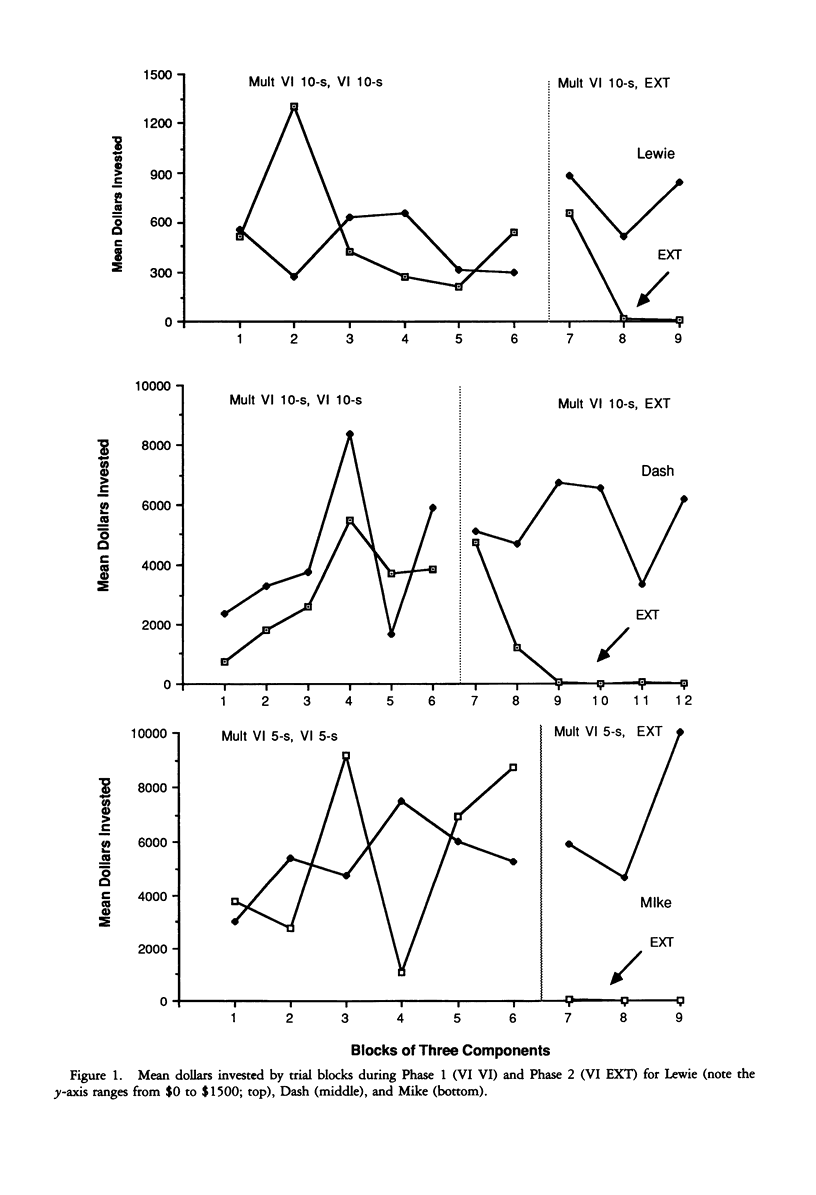
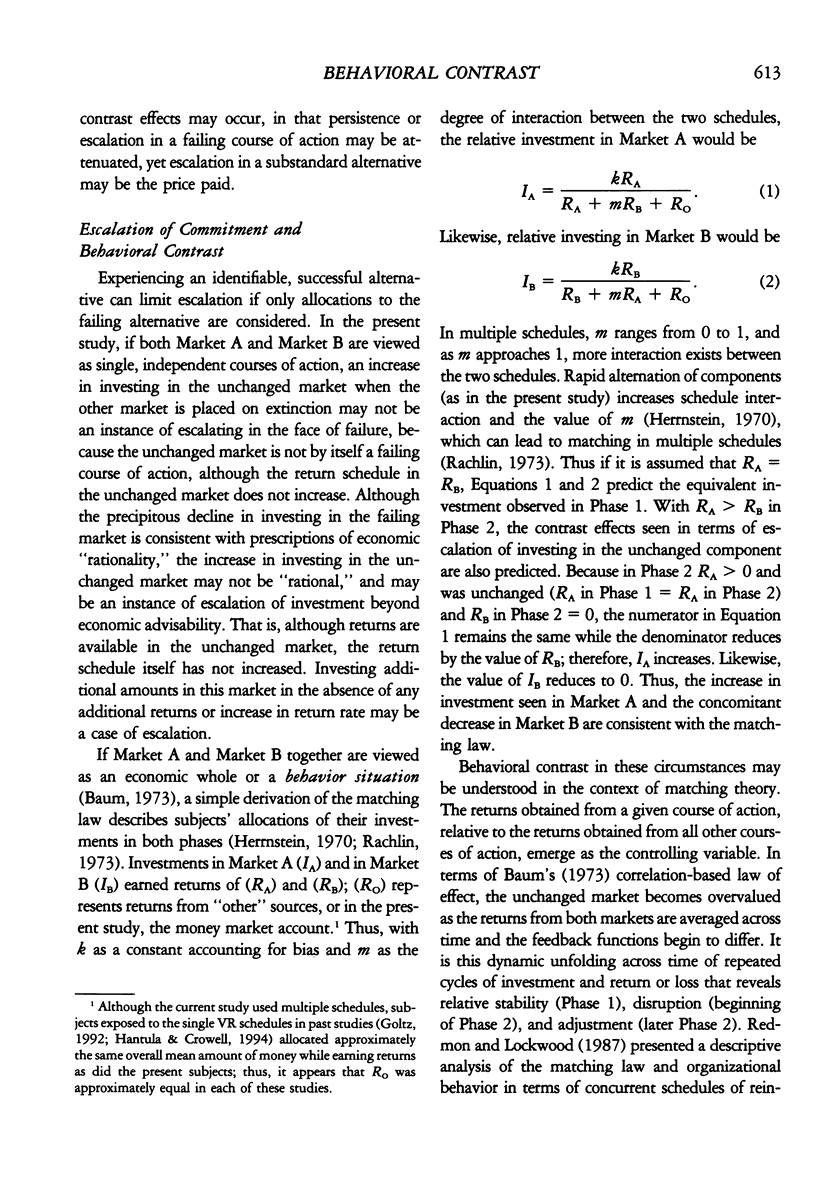
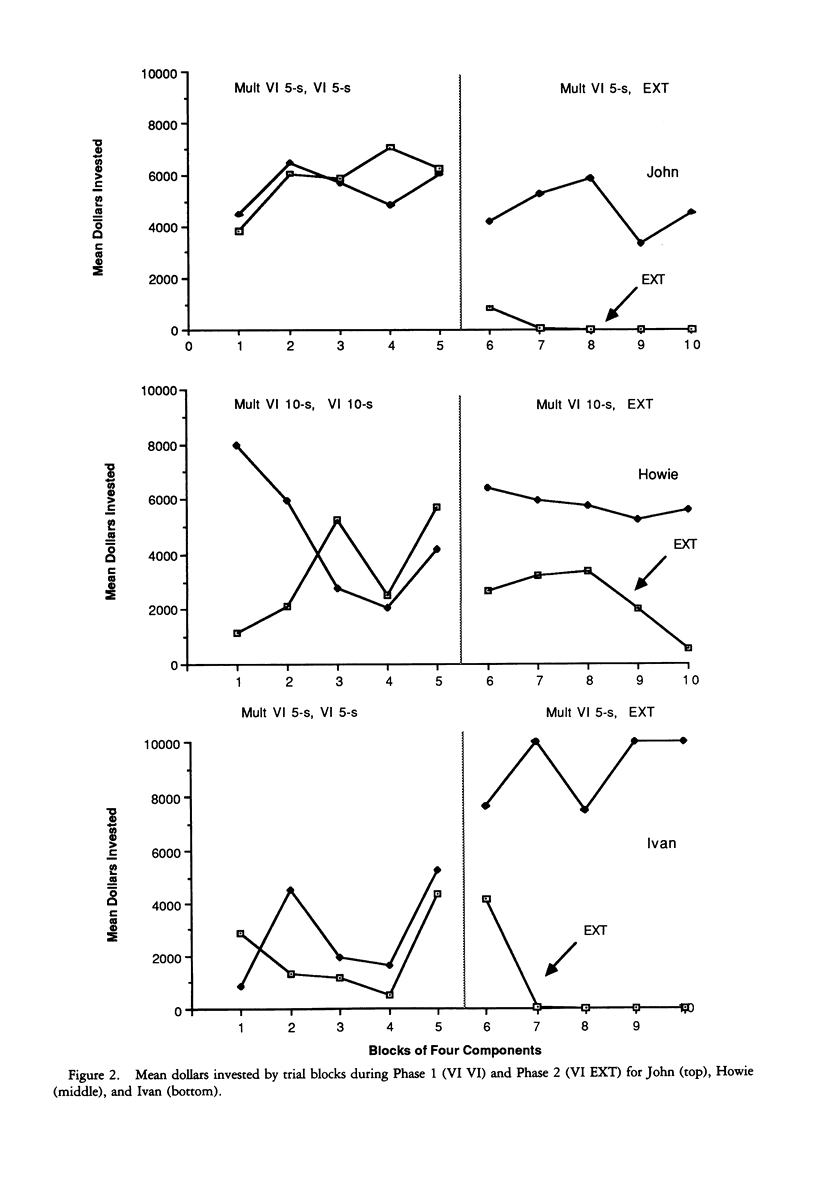
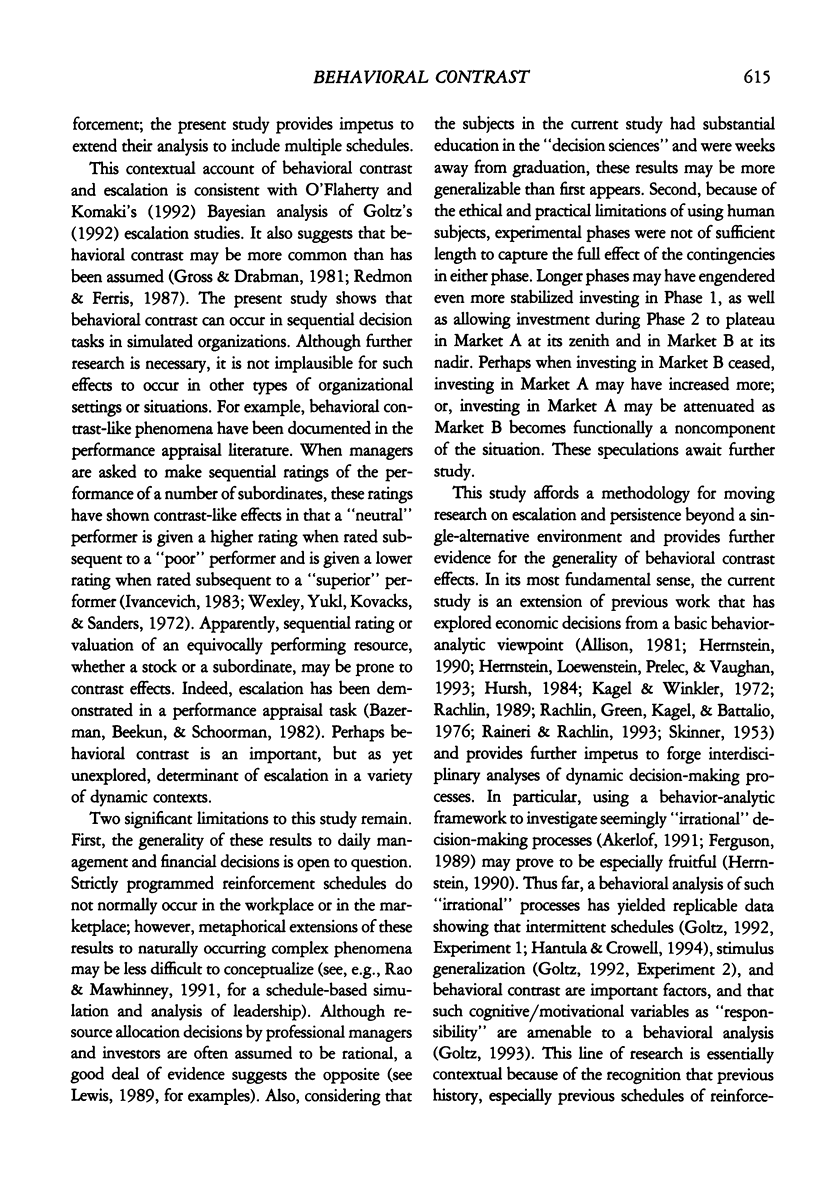
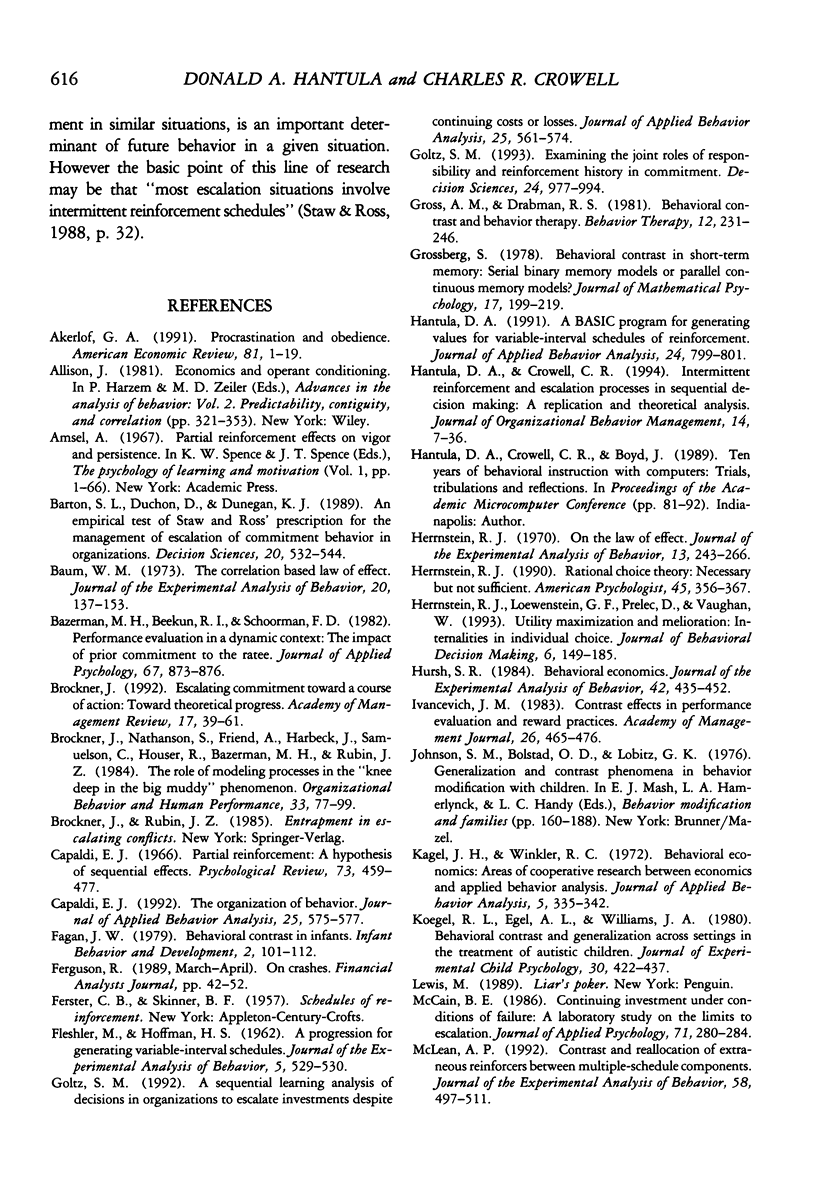
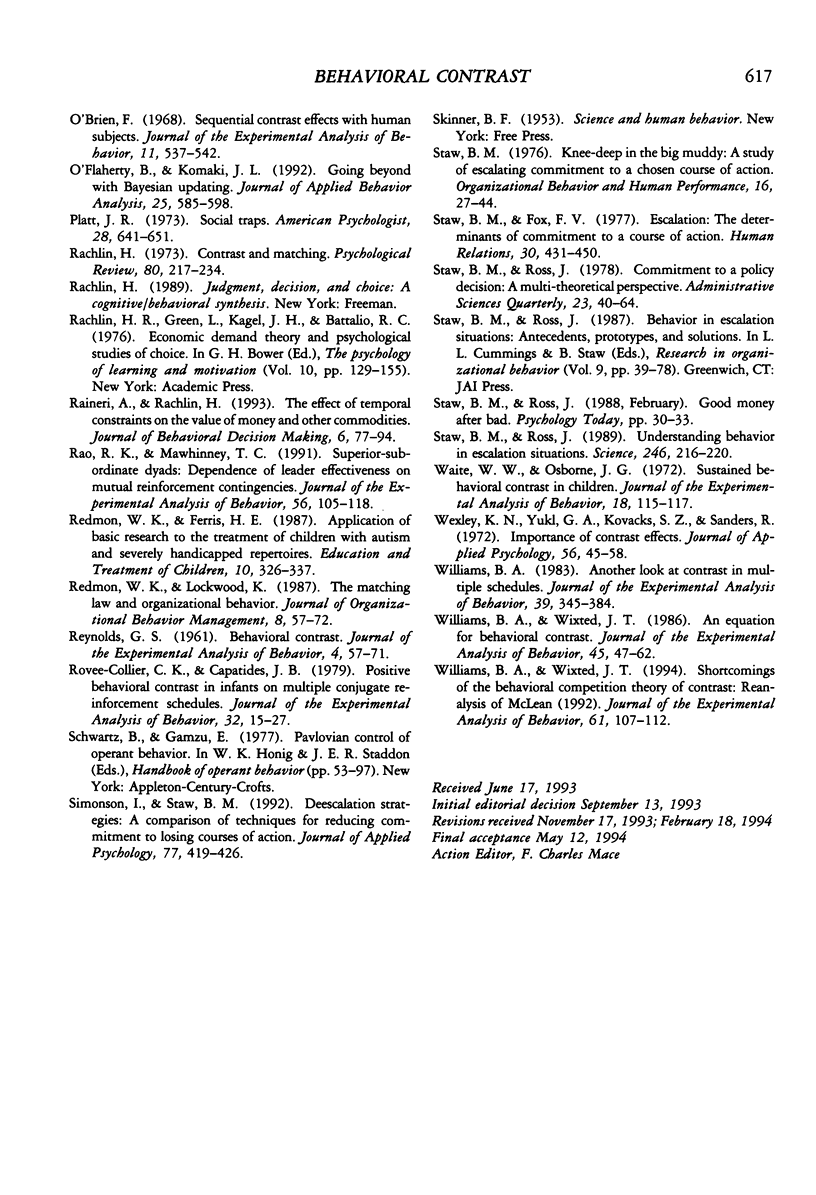
Selected References
These references are in PubMed. This may not be the complete list of references from this article.
- Baum W. M. The correlation-based law of effect. J Exp Anal Behav. 1973 Jul;20(1):137–153. doi: 10.1901/jeab.1973.20-137. [DOI] [PMC free article] [PubMed] [Google Scholar]
- Capaldi E. J. Partial reinforcement: a hypothesis of sequential effects. Psychol Rev. 1966 Sep;73(5):459–477. doi: 10.1037/h0023684. [DOI] [PubMed] [Google Scholar]
- Capaldi E. J. The organization of behavior. J Appl Behav Anal. 1992 Fall;25(3):575–577. doi: 10.1901/jaba.1992.25-575. [DOI] [PMC free article] [PubMed] [Google Scholar]
- FLESHLER M., HOFFMAN H. S. A progression for generating variable-interval schedules. J Exp Anal Behav. 1962 Oct;5:529–530. doi: 10.1901/jeab.1962.5-529. [DOI] [PMC free article] [PubMed] [Google Scholar]
- Goltz S. M. A sequential learning analysis of decisions in organizations to escalate investments despite continuing costs or losses. J Appl Behav Anal. 1992 Fall;25(3):561–574. doi: 10.1901/jaba.1992.25-561. [DOI] [PMC free article] [PubMed] [Google Scholar]
- Hantula D. A. A simple BASIC program to generate values for variable-interval schedules of reinforcement. J Appl Behav Anal. 1991 Winter;24(4):799–801. doi: 10.1901/jaba.1991.24-799. [DOI] [PMC free article] [PubMed] [Google Scholar]
- Herrnstein R. J. On the law of effect. J Exp Anal Behav. 1970 Mar;13(2):243–266. doi: 10.1901/jeab.1970.13-243. [DOI] [PMC free article] [PubMed] [Google Scholar]
- Hursh S. R. Behavioral economics. J Exp Anal Behav. 1984 Nov;42(3):435–452. doi: 10.1901/jeab.1984.42-435. [DOI] [PMC free article] [PubMed] [Google Scholar]
- Kagel J. H., Winkler R. C. Behavioral economics: areas of cooperative research between economics and applied behavioral analysis. J Appl Behav Anal. 1972 Fall;5(3):335–342. doi: 10.1901/jaba.1972.5-335. [DOI] [PMC free article] [PubMed] [Google Scholar]
- Koegel R. L., Egel A. L., Williams J. A. Behavioral contrast and generalization across settings in the treatment of autistic children. J Exp Child Psychol. 1980 Dec;30(3):422–437. doi: 10.1016/0022-0965(80)90048-x. [DOI] [PubMed] [Google Scholar]
- McLean A. P. Contrast and reallocation of extraneous reinforcers between multiple-schedule components. J Exp Anal Behav. 1992 Nov;58(3):497–511. doi: 10.1901/jeab.1992.58-497. [DOI] [PMC free article] [PubMed] [Google Scholar]
- O'Brien F. Sequential contrast effects with human subjects. J Exp Anal Behav. 1968 Sep;11(5):537–542. doi: 10.1901/jeab.1968.11-537. [DOI] [PMC free article] [PubMed] [Google Scholar]
- O'flaherty B. Going beyond with Bayesian updating. J Appl Behav Anal. 1992 Fall;25(3):585–597. doi: 10.1901/jaba.1992.25-585. [DOI] [PMC free article] [PubMed] [Google Scholar]
- REYNOLDS G. S. Behavioral contrast. J Exp Anal Behav. 1961 Jan;4:57–71. doi: 10.1901/jeab.1961.4-57. [DOI] [PMC free article] [PubMed] [Google Scholar]
- Rao R. K., Mawhinney T. C. Superior-subordinate dyads: Dependence of leader effectiveness on mutual reinforcement contingencies. J Exp Anal Behav. 1991 Jul;56(1):105–118. doi: 10.1901/jeab.1991.56-105. [DOI] [PMC free article] [PubMed] [Google Scholar]
- Rovee-Collier C. K., Capatides J. B. Positive behavioral contrast in 3-month-old infants on multiple conjugate reinforcement schedules. J Exp Anal Behav. 1979 Jul;32(1):15–27. doi: 10.1901/jeab.1979.32-15. [DOI] [PMC free article] [PubMed] [Google Scholar]
- Staw B. M., Ross J. Understanding behavior in escalation situations. Science. 1989 Oct 13;246(4927):216–220. doi: 10.1126/science.246.4927.216. [DOI] [PubMed] [Google Scholar]
- Waite W. W., Osborne J. G. Sustained behavioral contrast in children. J Exp Anal Behav. 1972 Jul;18(1):113–117. doi: 10.1901/jeab.1972.18-113. [DOI] [PMC free article] [PubMed] [Google Scholar]
- Williams B. A. Another look at contrast in multiple schedules. J Exp Anal Behav. 1983 Mar;39(2):345–384. doi: 10.1901/jeab.1983.39-345. [DOI] [PMC free article] [PubMed] [Google Scholar]
- Williams B. A., Wixted J. T. An equation for behavioral contrast. J Exp Anal Behav. 1986 Jan;45(1):47–62. doi: 10.1901/jeab.1986.45-47. [DOI] [PMC free article] [PubMed] [Google Scholar]
- Williams B. A., Wixted J. T. Shortcomings of the behavioral competition theory of contrast: Reanalysis of McLean (1992). J Exp Anal Behav. 1994 Jan;61(1):107–112. doi: 10.1901/jeab.1994.61-107. [DOI] [PMC free article] [PubMed] [Google Scholar]


